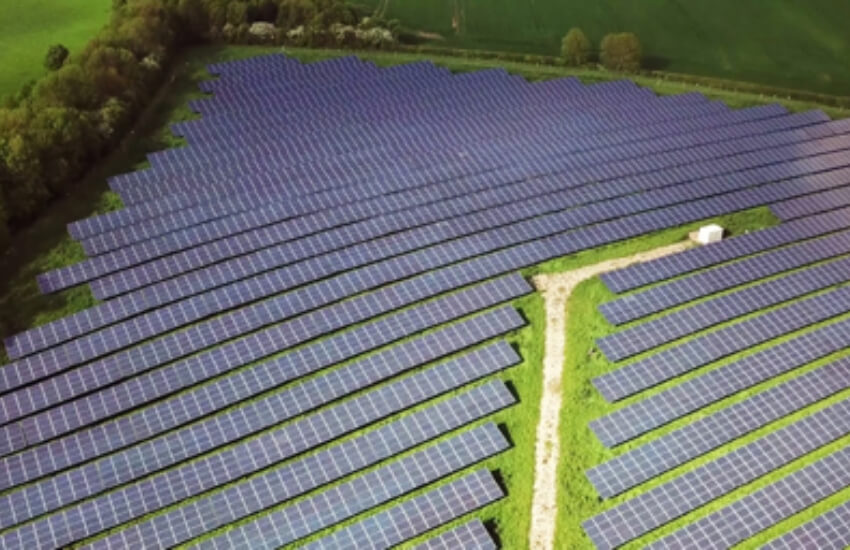Subsidy-free solar projects are “coming of age” thanks to the falling costs and flexibility of co-located battery storage technology, according to a new report which claims that more than 5 GW of solar capacity could be deployed in the UK without subsidies by 2030.
There are more than one million solar PV installations now in operation across the UK
The study, conducted by Aurora Energy Research and commissioned by Wyelands Bank and renewable energy firm Anesco, examined the rate of returns and viability of solar power and battery storage that are co-located on the same site.
The report concluded that the measure of the profitability of an investment discounted over the life of the project for projects deployed in 2020 is 6.6% to 7.6% under Aurora’s “base case market scenario. In comparison, the internal rates of return (IRR) for standalone solar and battery projects is 4%.
Aurora Energy Research’s principal and report author Benjamin Collie said: “Investing in either standalone solar or standalone storage assets carries technology and policy risks. If rapid innovation and supportive policy lead to fast deployment of solar, then that will tend to increase revenues for storage assets, but decrease revenues for existing solar assets. Conversely, slower deployment of solar would lead to lower revenues for storage but higher revenues for existing solar.
“Investing in a portfolio with both solar and storage can help mitigate these risks, and co-locating the assets allows for cost savings and more efficient use of grid connections.”
The report highlights that co-locating solar power with battery storage can accelerate deployment by de-risking the intermittency of renewables while unlocking additional revenue streams. In fact, the IRR for co-located projects could increase by a further 3% under “more aggressive” market scenarios. The hybrid systems could also help investors mitigate risks associated with subsidy-free projects, notable price cannibalisation.
Subsidy-free
The Government’s decision to axe the Feed-In Tariff (FiT) scheme will leave dozens of UK community groups “struggling to make the business case” for new small-scale solar projects, think tank Green Alliance has warned. Launched in 2010, the FiT scheme provides payments to owners of small-scale renewable generators at a fixed rate per unit of electricity produced, enabling the cost of installation to be recouped.
It has been one of the key factors contributing to the huge increase in solar photovoltaic deployment from 100 MW in January 2010 to 12.7GW at the end of 2017, of which 4.8GW is supported by FITs.
However, other groups have begun to argue that the playing field has now been levelled for a new era of subsidy-free, industrial-scale solar in the UK. The nation ranked seventh in the latest bi-annual Renewable Energy Country Attractiveness Index (RECAI) from consultancy EY, for example, up from 10th in the last index. Experts believe this trend is likely to continue, with several forecasts indicating that Britain will install 18GW of new solar capacity by 2030 and attract £20bn of investment.
This potential has been partly attributed to the success of the country’s first subsidy-free solar farm; a 10MW facility which was opened last September in Bedfordshire. Other large-scale subsidy-free arrays in development include a 15MWp onsite project at the Westcott Venture Business Park in Aylesbury and Warrington Borough Council’s recently announced 62 MW solar and 27 MW battery storage project.
There are more than one million solar PV installations now in operation across the UK, the majority of which have been installed over the last decade.
Recent government data, in fact, found that 99% of the current solar capacity in the UK became operational after 2010, and provided 12.9TWh of power in 2018, a 12% increase compared to 2017.
Despite the increased share of the energy mix, new solar power installations halved in the UK last year for the second year in a row, as the fallout of government subsidy cuts continued to shake the sector.
In January, the UK Government made a U-turn on its decision to end the solar “export tariff”, confirming that households which install solar panels in the future will be paid for excess power they generate and send to the grid. The export tariff is the replacement for solar panels under the feed-in tariff (FiT) scheme, which is closing in April.

